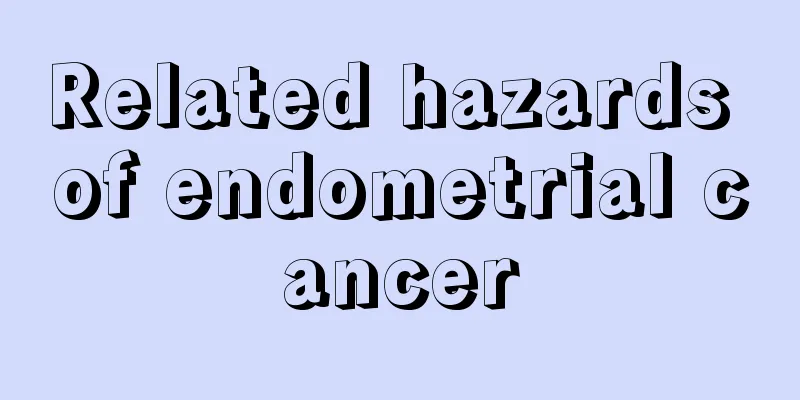What is parathyroid disease

|
Parathyroid disease, what is it? You may not know much about it. Of course, those who study medicine may know it, but how many ordinary people study medicine? Since many people are not studying medicine, it is very necessary for us to know what parathyroid disease is and how to treat it through some simple understanding. ① Blood calcium manifestations. Excessive secretion of PTH in the patient's body causes bone dissolution and enhanced calcium absorption by the renal tubules and intestines, leading to elevated blood calcium. Hypercalcemia reduces nerve excitability, resulting in neuromuscular and mental changes, such as fatigue, decreased muscle strength and tone, personality changes, decreased intelligence and memory, emotional instability and insomnia, etc. Occasionally there will be mental illness attacks, and in severe cases, coma may occur. Patients have relaxed gastrointestinal motility and may experience loss of appetite, nausea, vomiting, and constipation, and the incidence of ulcers increases. Some patients have chronic pancreatitis. ②Urinary system symptoms. When blood calcium is too high and exceeds the renal threshold, urinary calcium excretion increases, and calcium phosphate and calcium oxalate salts are easily deposited in the urinary system, forming urinary stones and renal calcification. Half of the patients had symptoms such as renal colic, hematuria and urinary sand and stones. Patients are prone to urinary tract infections, leading to renal damage and even uremia. In addition, hypercalcemia and hypercalciuria can also cause hyperosmotic diuresis, so patients often have polyuria and polydipsia. ③Bone changes. The patient's bones are generally decalcified, and long-term progression may lead to systemic osteitis fibrosa cystica. The characteristic changes are the appearance of cortical bone defects at the outer edges of the fingers and toes, which is called subperiosteal resorption. The dental lamina may also be absorbed. Skull X-rays show sand-like bone resorption changes. Cystic changes, giant cell tumor-like changes or brown tumors may occur in the long bones of the limbs, ribs, clavicles and pelvis. Patients often have local or systemic bone pain and tenderness, and have difficulty walking, squatting and standing up. In severe cases, they are bedridden and have difficulty turning over. Patients often have bone deformities and pathological fractures, their stature may become significantly shorter, and their teeth are prone to falling out. Secondary, tertiary and pseudohyperparathyroidism may also have manifestations of the primary disease. Primary and tertiary hyperparathyroidism should be treated with surgical removal of tumors or hyperplastic parathyroid glands. Surgical complications are rare, and only 1% of patients develop recurrent laryngeal nerve damage or permanent hypoparathyroidism after surgery. However, it is sometimes difficult to locate ectopic parathyroid tumors. If it is hyperplasia, three and a half parathyroid glands can be removed or complete removal followed by partial autologous transplantation. The normal parathyroid glands of patients with long-term severe hypercalcemia are in a suppressed state, and hypocalcemia is prone to occur after surgery. Preoperatively, drugs should be used to lower blood calcium levels to stimulate the recovery of suppressed parathyroid function. In addition, attention should be paid to timely supplementation of calcium and vitamin D after surgery. If there is persistent and refractory hypocalcemia, the possibility of hypomagnesemia should be considered and magnesium supplementation can be given at the same time. Pseudohyperparathyroidism should be treated with radical treatment of the primary lesion. Hypoparathyroidism is a metabolic abnormality caused by decreased PTH secretion or failure of peripheral target organs to respond to PTH. After we know some knowledge about this disease, we should understand that this is also a rather troublesome disease, so we should pay more attention to it. If conditions permit, timely physical examination is very necessary. Moreover, if it is detected and treated in time, it will not cause irreparable consequences. I hope everyone will be alert and stay away from the disease. |
<<: What does Nutcracker Syndrome mean
>>: What are the specific methods of moist heat sterilization?
Recommend
What are the benefits of drinking Dendrobium nobile soaked in water
Dendrobium candidum is a particularly precious Ch...
What are the symptoms of systemic candida infection
Systemic candidiasis is an infection in multiple ...
Which mascara is good to use
Mascara is a must-have cosmetic every time you pu...
How should liver cancer be diagnosed? Several common diagnostic methods for liver cancer
The main purpose of a blood test to diagnose live...
Pathological types of gastric cancer
Adenocarcinoma accounts for about 95% of gastric ...
Why do I always feel sleepy in the morning?
It is normal to feel sleepy after lunch, but if y...
What are the clinical manifestations of infertility
I believe that many female friends now have infer...
Principles of medication for bronchitis
As we all know, bronchitis is a common respirator...
Which hospital is reliable for treating osteosarcoma
Some osteosarcoma patients, after being diagnosed...
What is the difference between rhinitis and nasopharyngeal carcinoma bleeding
What is the difference between the early symptoms...
How to prevent throat cancer in daily life
How to prevent throat cancer in life? Throat canc...
I feel hungry, dizzy, and weak in my hands and feet
Every time people are hungry, they will feel dizz...
What are the conditions for not having surgery for thyroid cancer
The conditions for not undergoing surgery for thy...
What medicine is effective for cervical spondylosis?
Cervical spondylosis is an extremely harmful dise...
6 tips to refresh your mind in summer
White-collar workers, what should you do if you f...









